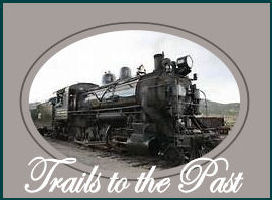The first settlers of Emmons County came from parts of Europe and the eastern United States. The earliest were mostly soldiers discharged from Fort Yates, but civilians began arriving in the 1880s. Two large ethnic groups soon developed: Germans from both Russia and Germany (the latter called Reich Germans) and Hollanders who had come from the eastern United States. The Hollanders lived only in the southwestern part of the county while the Germans settled throughout the area.
The settlers faced many hardships upon arrival in Emmons County. The worst of which was probably the adverse climate. Extreme seasonal variations in temperature, wind, rain, and snow made life difficult. Severe winter blizzards and summer thunderstorms and tornadoes were a constant threat. To shelter themselves against the sometimes inhospitable climate, early settlers built crude but durable dwellings using whatever materials they could find. The first building in Emmons county was a log cabin built near what was to become the town of Winona in 1852. Some other early dwellings were built of tar paper or local rocks. Rocks were a common sight on the prairie, but stone houses were a rarity because they took great care to build. The most common type of dwelling was the sod house, which later became synonymous with pioneering life on the prairie. Sod is prairie grass and dirt cut into blocks and stacked to form walls. Sod was an effective solution to the problem of limited lumber availability. These crude dwellings were eventually abandoned in favor of more modern homes as soon as the necessary building materials became available.
Another hardship was transportation. There were no roads and the nearest railroad station was in Eureka, South Dakota 40 miles away. A horse and wagon were typically used for transportation. Buffalo bones were often piled up and used as landmarks to aid navigating the vast prairie. Since no bridges existed, creeks and streams presented a major difficulty. Settlers usually traveled in pairs and used both of their teams of horses to pull each wagon across a creek or stream. The first bridge in Emmons County was not built until 1889.
The Missouri River is the western boundary of Emmons County. An early industry to develop was one of providing cordwood for the steamboats plying the river. The steamboats could operate only during the summer months due to the river freezing over in the winter. The lack of bridges necessitated the use of ferries to traverse the river the last of which washed ashore in 1940. Barges were also used to move freight up and down the river.


